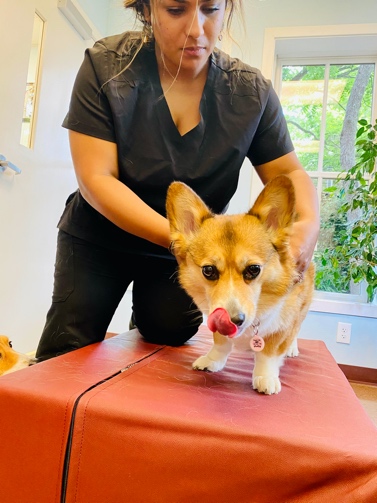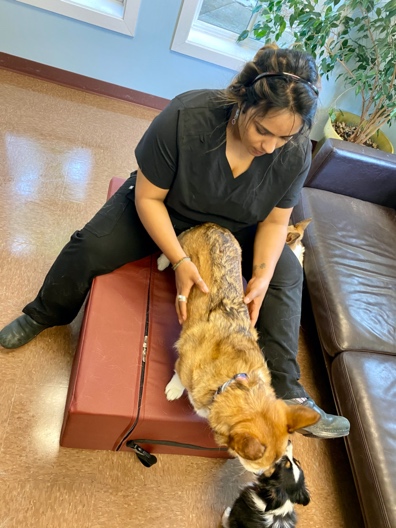VMM is equivalent to the human form of chiropractic medicine. It includes a motion palpation assessment and gentle manipulation of the skeletal system and its associated soft tissue, tendons, ligaments, and neural input to improve performance of the musculoskeletal system and overall health. VMM is not just about restoring proper skeletal alignment, but it addresses muscle trigger points and involves myofascial release to influence the whole anatomy train. Many body work techniques can also be used during a VMM adjustment by your practitioner including Tui-na An-mo, Reiki, cranial-sacral therapy, soft tissue massage, muscle testing, and traction stretching.

Which patients benefit from VMM?
All patients! Although, it’s recommend to wait till after 6 months of age. Patients of all ages with acute or chronic musculoskeletal disease processes or even neurological disorders will benefit. Especially those who have compensatory changes ie. Tripods, paraplegics, chronic lameness, degenerative changes, post-operative etc.
What can I expect during an adjustment?
Patients often lick/chew after each manipulation and typically do a good shake after treatment to reset themselves, (this is a good sign!) Occasionally some adjustments may be a little uncomfortable especially for those who have chronic restrictions. Restrictions are what veterinarians identify during the motion palpation exam to adjust. Restrictions are characterized by bones that do not have their normal subtle mobility within the skeleton. Gentle adjustments of these diagnosed restrictions are performed to alleviate pain, prevent further injury, and stimulate nerves. Unlike your own visit to the chiropractor, there are less cavitation noises (those satisfying popping sounds) with animals. On some occasions, urination/defecation can occur with pelvic adjustments as there can be some major nerve stimulation. What’s amazing is that adjustments can help those animals who have incontinence to achieve restored control. Overall, this is a relaxing and restorative visit for your pet from which they will greatly benefit – plus, they might even have some fun too with all the treats!

Patients can feel great after their first adjustment and you may notice increased range of motion in their problem areas immediately. Some patients may experience increase thirst/urination or mild discomfort/lethargy, but this should resolve in 48 hours. The discomfort arises from changes in muscle memory and biomechanics. Sometimes patients may seem a little worse before they get better; but when adjustments are combined with acupuncture and therapeutic laser we can achieve our goals even faster. For patients who have severe orthopedic disease, herbals, nutraceuticals, and/or pain medications may be prescribed as part of pain management as well. Typically 3-4 treatments are recommended spaced 1-2 weeks apart, but some patients may just need 1-2 adjustments. From there, adjustments recommended as needed or as advised by your veterinarian. Limiting coarse exercise for 48 hours after adjustments is recommended.

How do I know if my pet would be a candidate?
You’ll need to schedule a consult at our practice for the veterinarian to evaluate how chiropractic medicine can benefit your pet’s specific needs and what necessary diagnostics should be performed prior to treatments. Your pet must have a current physical exam and current labs. Radiographs are strongly recommended for all patients and may be necessary for some depending on the case. Fractures, trauma, IVDD, herniations, genetic orthopedic conditions etc. need to be identified. If your pet has any of these conditions, it’s important for your practitioner to know where these lesions are so that they can adjust accordingly and decide whether other modalities should also be used such as acupuncture, laser, physical therapy etc.
Dr. Ray Khare

